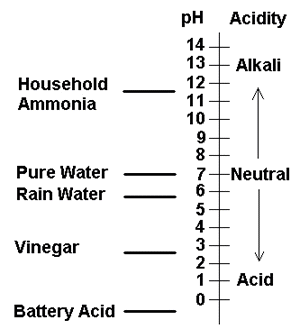Want
a great garden? Proper soil preparation is the first, and
perhaps most important, step in the process. Unfortunately,
too many people ignore this step and pay a heavy price in poor
plant growth and survival over the following years.
 With
very few exceptions, vegetables, flowers, vines,
roses,
grass, and other plants all need good drainage, a pH in the
6.0 to 6.5 range and adequate nutrient levels.
Clay
soils with
their very small particles tend to drain poorly while sandy
soils which have larger particles drain too well and do not
hold nutrients.
With
very few exceptions, vegetables, flowers, vines,
roses,
grass, and other plants all need good drainage, a pH in the
6.0 to 6.5 range and adequate nutrient levels.
Clay
soils with
their very small particles tend to drain poorly while sandy
soils which have larger particles drain too well and do not
hold nutrients.
An ideal soil is composed of about 25% air
space, 25% water, 5% organic matter and 45% minerals. Over
time, most soils become compacted and lose the air and water
spaces. The organic matter is constantly being decomposed by
soil organisms. The great thing is that the problem with both
types of soil can be alleviated by adding organic matter.
Coarse materials such as leaves, shredded wood chips and
manures which have been composted tend to work best. In
clay, these materials open up air spaces and allow for better
drainage. In sand, organic matter clogs some of the larger
pores and absorbs both water and nutrients so they are
available to plant roots.
How much organic matter should be added?
Some people say that there is no such thing as too much.
Practically speaking, around 25 to 33% by volume should be
added when preparing the soil. This means that 2 or 3 inches
of organic matter should be worked into the top 8 inches of
soil. Use 4 or 5 inches if the soil is worked to a depth of
one foot.
Every avid gardener has a recipe for soil
preparation. Some like to add green sand and sphagnum peat
moss. Others recommend using only
manure from Rhode Island Red
chickens collected by the light of the first full moon.
In
the end, adding plenty of organic matter and turning the soil
with a shovel or rototiller to re-establish the proper balance
are of paramount importance. This will go a long way in
establishing a "healthy" soil. Adding air spaces encourages
aerobic organisms needed to break the organic matter into its
component parts which releases nutrients to the plants. Plant
roots need oxygen to fuel the process of nutrient and water
uptake.
Notice that trees were not included in the
list of plants that benefit from amending soils. Generally,
when planting trees, only the original soil taken from the
hole should be used as backfill. Technically, trees would also
benefit from soil amendments but only if the entire root zone
of the mature tree could be amended. For a maple or other
large tree, this would require changing the soil in a huge
area. It just is not practical.
Adding a little peat moss or compost to the
planting hole of a tree often creates more problems. The roots
of the trees tend to stay in this small area of wonderful soil
and never move out into the adjacent native soils. After
several years, the root system may still be quite limited and
unable to support the tree during times of stress. In clay
soils, a "bathtub" effect may be formed where water stagnates
in the bottom of the hole and kills the root system.



